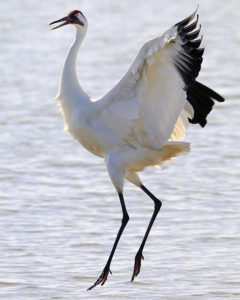Wetlands can Fight Climate Change, but They Need our Help
When we talk about climate change, we usually discuss its effects on agriculture, people’s homes, or the icebergs in Antarctica. And, often, what follows is discussion on how reducing carbon emissions and planting more trees can help mitigate these negative effects. No one ever brings up the wetlands that have been destroyed by anthropogenic practices and a drastically changing climate.
But more importantly, no one seems to mention the arsenal of tools lying just below the belly of these wetlands. And these tools could hold the key to mitigating the negative effects of climate change.
Why do we Need Wetlands?
This is a question that we have asked since our arrival in North America.
Settlers in the 1700s viewed these marshy pieces of land as blemishes on the face of Colonial America. Wetlands were inconvenient, as they made travel more difficult. They were also perceived as breeding grounds for disease, and as such, were treated as wastelands. While wetlands provided a variety of resources for settlers, they offered little else; therefore, settlers turned to swamp drainage.
In the 1600s, America possessed 221 million acres of wetlands. By the mid 1980s, however, this number shrank to 103 million acres.
These lands were drained for mainly two purposes: to cultivate suitable farmland and to make way for transportation routes. In the 1800s, this didn’t seem like a bad idea. America’s population was multiplying and they needed fertile land on which to grow crops. They also needed more space for settlements and roads. Looking back, however, we now understand why we need wetlands.
How Wetlands Help the Planet
So how do wetlands help the planet?
Wetlands play a vital role in restoring and protecting our environment, as they:
- Purify Water: they filter sediment and absorb the pollutants in surface water. This is doubly important because they also provide drinking water. For example, Florida’s Everglades recharge the Biscayne Aquifer, which supplies drinking water to Miami.
- Mitigate Damage from Storms: coastal wetlands will take major hits from storms, defending coastal land. In doing so, they prevent property damage, reduce erosion, and curtail flooding by absorbing water.
- Provide Fish, Plant, and Wildlife Habitat: these lands are incredibly diverse. They provide habitat for various species of fish, plants, reptiles, birds, mammals, and amphibians. In fact, between 60 and 90 percent of U.S. commercial fisheries depend on wetlands, as do 7,000 plant species.

- Provide Safe Habitat for Endangered Species: one of the greatest aspects of wetlands is that they provide habitat for 1/3 of all plant and animal species listed as endangered. This includes whooping cranes, American crocodiles, and (plant lovers!) several orchid species.
- Help Ecosystems: they release good into the ecosystem and absorb the bad from it. During storms, wetland materials that contain nutrients will help feed plants and animals. These lands will also absorb pollutants and greenhouse gases.
Looking back, you might think colonial Americans were crazy for destroying such a valuable part of the ecosystem. (Well, they were.) In that time, however, expansion, crop cultivation, and superiority in all aspects were of concern. The issues of endangered species, environmental degradation, and natural water purification didn’t matter.
But they certainly do now.
And since we know that wetlands can do so much good for the planet and can help mitigate the effects of climate change, it is now our responsibility to help restore them.
Wetland Restoration
The EPA currently works with the government–local, state, and tribal–in order to restore wetlands. Development continues to pose problems to these lands (didn’t we learn our lesson from the colonists?), but so does climate change.
According to the EPA, sea level rise, drought, and wildfires all contribute to wetland displacement. Sea level rise introduces salt water to these freshwater ecosystems, which inhibits movement inland. Warmer temperatures, drought, and changing precipitation patterns can lead to evapotranspiration, resulting in water loss. This affects fish, plant, and wildlife as well as the land’s ability to purify water and defend coastal lands. Drought can also lead to wildfires, which alter wetland structures.
So what can be done to protect them?
Well, the EPA has implemented adaptation planning strategies for communities to adapt to climate change. While this doesn’t necessarily protect wetlands from the effects of climate change, it does educate communities on their climate’s vulnerabilities.
In order to truly protect wetlands, however, we must first address the variables that we can actually control.
Protecting Wetlands
Did you know that wetlands are still being drained to make room for agriculture and urban developments?
In fact, coastal wetlands are being used for aquaculture in order to breed the fish and shrimp we eat.
If we could keep farmers and developers from destroying these lands, we could help sustain them. For years, farmers have cultivated new land for agriculture rather than continuing to use their current plots of land. This is because conventional agricultural practices have degraded soil quality, making it infertile. Rather than healing the soil, farmers have sought new land on which to plant their crops.
Regenerative agriculture, which helps heal the soil, could prevent farmers from developing wetlands for crop production. This would keep farmers from destroying wetlands. In addition, we could implement laws that keep developers from building neighborhoods and shopping plazas on these grounds, thus eliminating wetland destruction.
As for climate-related variables, all we can truly do is reach our climate goals. By working to reduce greenhouse gas emissions; restore soil, air, and water quality; support biodiversity; and limit pollution, we will eventually help restore our wetlands.
And once they’re restored, they will help us by keeping the negative effects of climate change at bay.
Sources:



